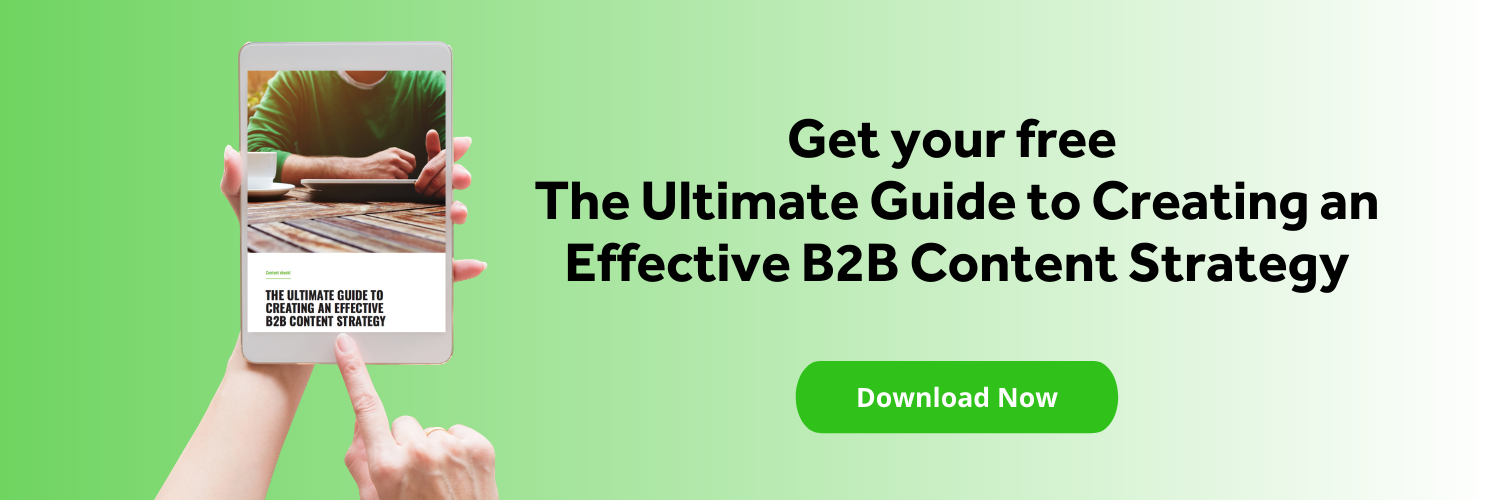Social media is nothing without the content that makes it interesting for its users. Content truly is the backbone for all of the other activities that make up your social media plan. And having great content can make all the difference when it comes to having the best reach and engagement for your brand, which helps you build more loyalty and drive more sales.
Nicole Votolato Montgomery, Associate Professor of Marketing at the McIntire School of Commerce, University of Virginia explains:
“Marketers have less than three seconds to grab attention because we are constantly scrolling through content. And so, consumers are making decisions in a matter of seconds whether or not they want to stay with a piece of content and engage, or continue to scroll and move on to the next piece of content. It's our job as social media marketers to try to engage them and grab their attention so that we go from this continued scrolling to thumb stopping.”
If you’ve been marketing for a while, chances are you have a content strategy in place already that includes things like your email newsletter, blog posts, your website, and downloadable content like ebooks.
Social content is different. It usually serves as the vehicle to get people to those longer pieces of content — or, to provide smaller, digestible bits of information that help expose your brand and your values to customers and prospects. The biggest difference between social content and traditional forms of content is that social content can be read and watched in the places and times that people choose.

There are three main reasons why people use social media: They want to be informed, entertained, and connected.
Social media helps people feel informed by helping them learn new things, stay up-to-date on topics that matter to them, and discover new ideas and trends.
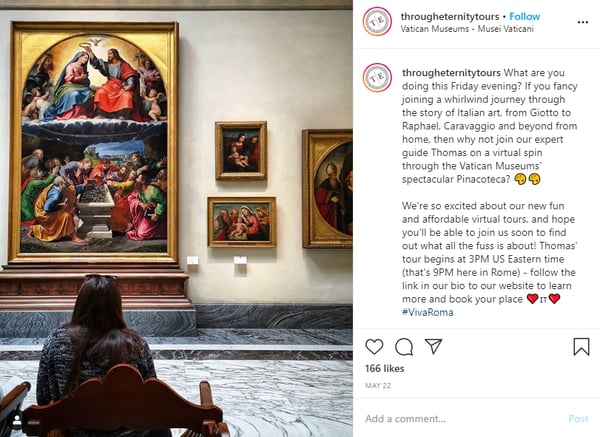
Social media helps people feel entertained by helping them find and keep up with entertainers, shows, and performances – and share and consume entertaining articles and videos. It’s no wonder there’s such an emphasis on video content on social: entertainment and video are key to keeping users engaged.
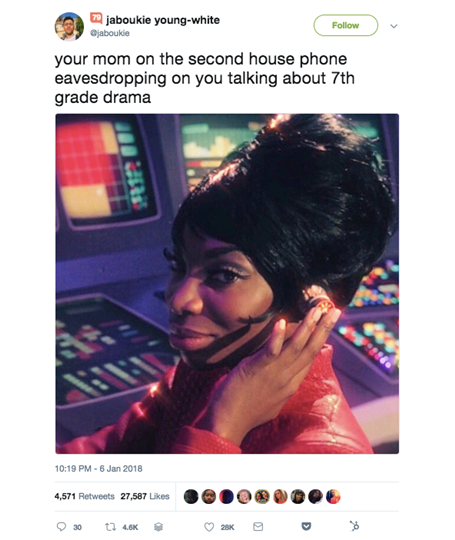
Social media helps people feel connected by removing many of the typical barriers of communication and allowing people to contact anyone in their personal or professional networks whenever, and from wherever. Social media helps people share, comment, and take part in a global conversation that goes beyond just the people they’re friends with.
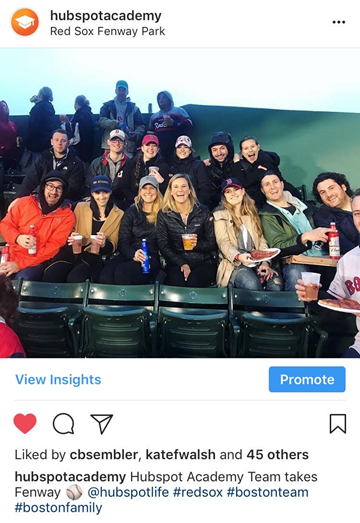
It’s up to you to determine which type of interaction your audience is looking for, and how you’ll provide it to them through the content you create.
Developing Your Social Media Content Strategy
Let’s talk about developing your strategic content plan for social media.
Adopting every social channel and publishing whatever content you feel like won’t deliver business results. It’s when you approach your social media content strategically that you’ll see the most success.
Your success on social media depends on creating a sensible strategy for your content — one that fits well with your resources and your goals. This is especially important if you don’t have a full-time team of social media experts at your disposal, because with fewer resources, you’ll need to be even more strategic with what you publish and on which channels.
So, how do you develop a strong content strategy for social media that will bring success to your business? Let’s go through a simple step-by-step process for developing a strategic content plan. The first step is to figure out what has worked well for you in the past. Which social media channels has your target audience engaged with the most? What types of content have performed best for views, click throughs, and comments?
Conduct a content audit of your social media channels to understand what your audience responds to best. In your content audit, look at:
● social networks,
● content types, and
● which social campaigns are seeing a return on investment?
To gather your data, you can either use a social analytics tool, like the ones we’ve listed here, which can aggregate all that data – definitely the easiest option. Or, you can manually pull the data from each channel’s analytics tabs and compile it yourself.
Chad Rogers at Lemonlight says
“Brands should always be thinking about who their target market is, where they live, and how they're consuming that content. So, whether you're a B2B marketer or a B to C marketer, thinking about what platform is best for you. Secondly, how are they consuming that content? Are they consuming it on the go? Are they consuming it while they're leaning forward, taking a break from work? Or are they consuming it when they're laying back at the end of the day and they're consuming longer form content?”
To do your audit, use a spreadsheet to record how your content has performed so far, with a tab for each individual social media channel. Once you have your spreadsheet set up, go into each channel tab and record things like engagement metrics, publishing metrics, audience demographics, referral traffic, and any metrics that are channel-specific, like “retweets” on Twitter. Make sure you measure not just the raw numbers but also the percentage change from the previous month or year.
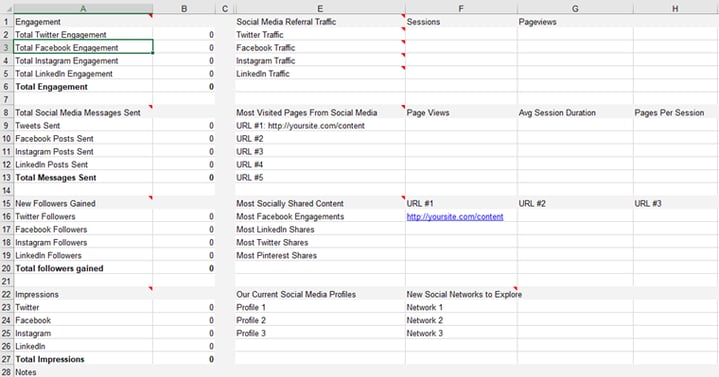
To get an even better picture of what types of content performs well, look through and identify the top-performing posts for each channel. You can even take this a step further by categorising these top posts by post type: educational and informational posts, video posts, LIVE video posts, image and GIF posts, promotional posts, and entertainment posts.
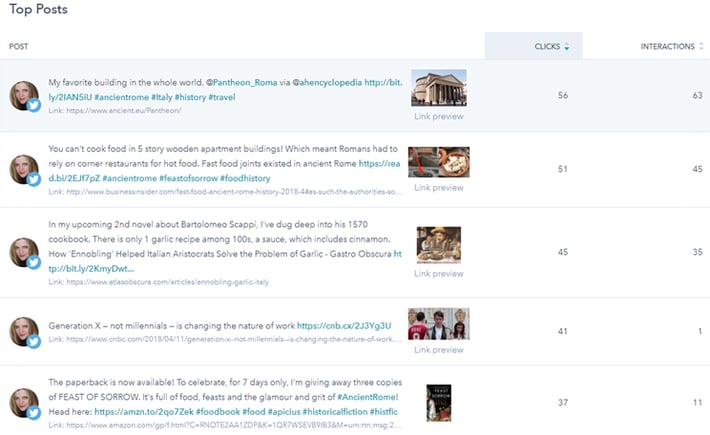
That’s right – really dig in at the post level to figure out which types of content you should add to your plan for each social channel. How you do so will depend on the platform and if you use a social media tool to manage your content. If your video posts got the most shares on Facebook, for example, then you may want to experiment with publishing more video posts. If your promotional posts get more clicks and shares on LinkedIn than they do other social channels, then you might think about scaling them back everywhere but LinkedIn. If your competitors are seeing success with live video and you haven’t really tried live video yet, then you may want to test it out on different channels to see how your audience responds. Don’t be afraid to play.
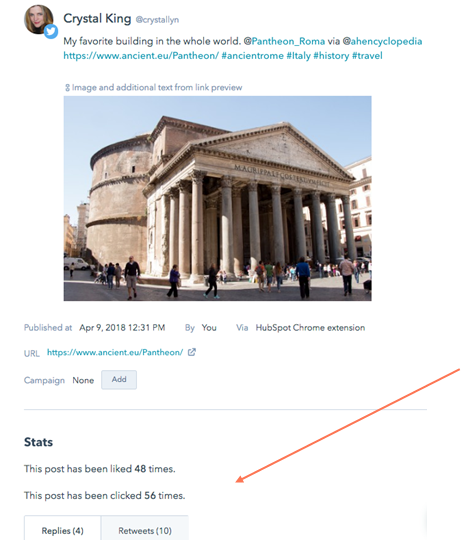
Emilie Lewis, Social Strategist and Bookseller at Belmont Books explains their strategy.
“Our bookstore has three different social media platforms that we're on, Instagram, Twitter, and Facebook. We try to keep the same brand identity across all of those. We are a bookstore, we're about books, but we're also about customers, readers and authors. We have different audiences and so we try to cater to that. Our Facebook is mostly concentrated on letting people know our upcoming events. That's where we can put the most information and you don't have a word limit. It's not as visual though, so on Instagram we post beautiful images of the books. You don't want to judge a book by the cover, but sometimes we do--it is part of marketing. For Twitter it's a pretty quick bite. We let people know about upcoming events, particularly something is happening off the cuff that we weren't expecting. Or, we use it to or to respond to publishers and authors to keep our name out there. On Twitter, it's easy to just hop on and say, ‘Hey, this author's just dropped by the store to sign books. Come and grab a copy."
Knowing which types of content performs well on each channel will be key to understanding what you should be doing more of – and less of. If you’re missing any of these post types in your strategy, like live video for example, then think about how you can experiment with it in the future.
Alright, now that you’ve done a full audit of your social content and channels, I want you to think carefully about your goals and your buyer personas.
Start with your goals. What do you hope to get out of your social media efforts? Are you trying to grow your audience? Increase traffic to your blog or website? If you find that you don’t have any specific goals yet for social, then the audit you perform will help you establish a benchmark for certain metrics so you can develop new goals and work toward them.
Now, who are your buyer personas? How are they using each social network? What are they talking about? What are they interested in learning? Are you already engaging them in ways that resonate with them?
If you don’t have your business goals and buyer personas in mind as you’re developing content and social campaigns, then you probably aren’t using social as effectively as you could be.
So you’re creating your plan to achieve those goals and connect with those buyer personas. Next, do research on how your competitors are using social media. How many followers do they have compared to you on each channel? How is their content performing – from the metrics that you can see, at least? Which types of content are performing best for them? How are they engaging with their followers? By looking at your competition, you can get a sense of how you stack up and where you might have gaps that you’ll need to close in your own strategy.
Building a sensible content strategy takes a lot of research and analysis of not only your social content but also your competitors’ content. Once you’ve done this research and analysis, you can start to piece together a plan.
Next, consider your resources. Who’s writing and designing content for social media right now? Do you have a team dedicated to social media who can create great copy, images, GIFs, and videos? Or are your resources kinda limited, and you’ll have to rely on help from folks within your organisation or a third-party agency? Who’s going to actually press “publish” on these posts?
Samarah Daher, VP Media Operations at Refinery29 says that
“At Refinery, when we're developing content, we try to develop more content that's evergreen and has a long shelf-life. We still address the news, but typically not in types of content that would require a lot of resources. Instagram stories are a feed asset that's just text onscreen is a really good way for us to lean into something that's super trending, because it's so easy to make on your phone. But content that requires a host and a studio and multiple cameras, we try to keep that content more in the evergreen space, so it has a long shelf-life. Even if it's something that is topical, like Thanksgiving content, or spring break content, we know we'll be able to use it every year if we invest resources into it to make it high production value.”
Think about the size of your team. Your content plan will look different if you’re a one- or two- person social media team than if you have a team of five or more people. If you feel like you’re strapped for resources, then you might want to prioritise your top social channels over the others. Think back to your content audit and identify which channels have performed best for you in the past – and think about prioritising those channels.
Finally, always be testing your content. But no matter how big or small your team is, testing and playing around with different messaging and content types is the only way to learn what really resonates with your audience. Make sure experimentation is ingrained in your strategic plan.
Nicole Votolato Montgomery says,
“Some interesting things that brands can do to stay nimble are to experiment when new platforms come out. Brands like ESPN and the NBA and even The Washington Post are experimenting on platforms like LinkedIn which has typically been for business. I also think using a multichannel approach can be very beneficial for helping brands to learn what works. Casper is actually doing this. Casper Mattresses, they've developed a Casper Sleep Channel using Spotify and YouTube and IGTV. So continuing to test and learn is crucial to brands staying nimble in this changing environment.”
Now, once you have a really good idea of which social channels you want to prioritise and which types of content you want to post on each channel, it’s time to build out a content calendar that you can use to prep content for the upcoming weeks and months. And when you actually go to create your content, make sure you’re following your brand guidelines for content creation if you have them.
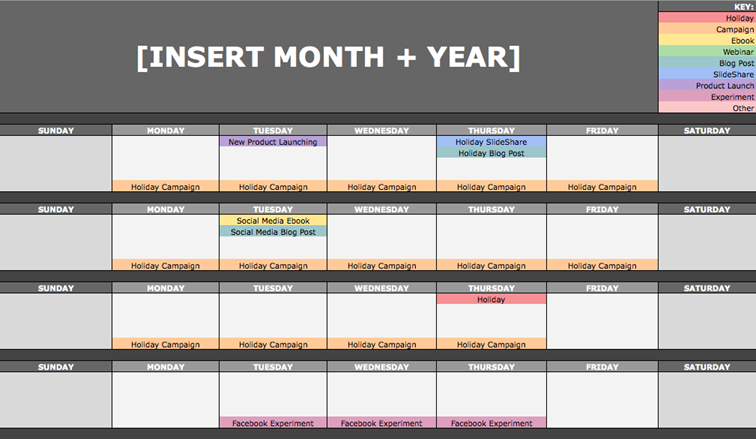
And finally, don’t be afraid to get creative with your social media content. One of the biggest challenges people face in social media today is that they have trouble being heard above all the noise, and creativity can help you stand out.
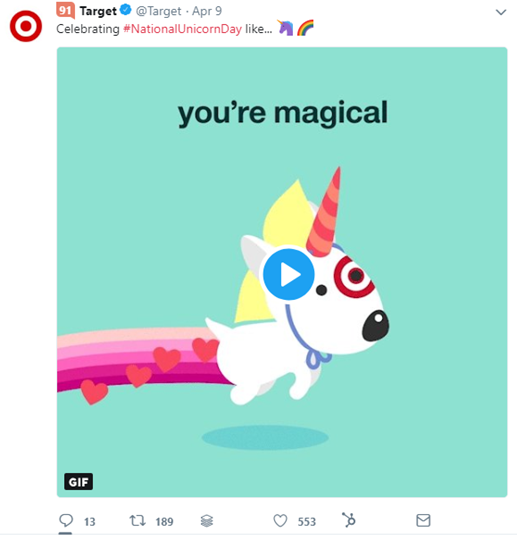
Denny’s, a popular American restaurant chain, is a great example of a brand that could have blended in on social media but chose to stand out as part of their social strategy. There are a lot of brands out there like Denny’s that have figured out how to stand out and get creative in a way that really resonates with their audience.
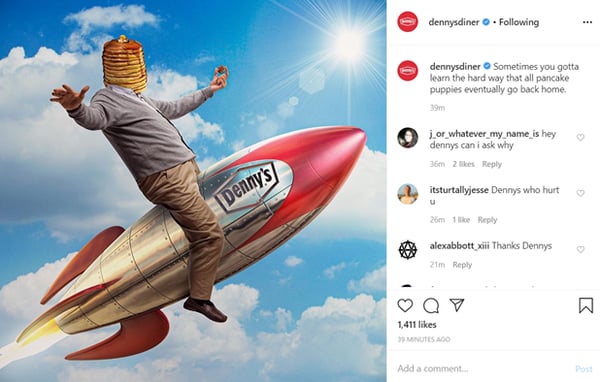
Building a social media strategy for each channel takes a lot of time, research, and careful planning. But the more you can base your content plan on what’s worked in the past, on your specific business goals and buyer personas, on competitive research, and on continual experimentation, the more your social media efforts will pay off. If you want to take a deeper dive into social media strategy, HubSpot Academy’s Social Media Course is a good place to start.
About the guest author:
 Crystal King is a Social Media Professor for HubSpot Academy. Crystal created HubSpot Academy’s popular Social Media Marketing Course which has awarded over 50,000 certifications to professionals across the globe. Crystal has led global social media programs for companies such as Keurig and CA Technologies,and taught classes in writing, creativity and social media at Harvard Extension School, Boston University, UMass Boston and GrubStreet, one of the leading creative writing centers in the US. She is also the author of two novels, The Chef’s Secret and Feast of Sorrow. Follow her on Twitter: @crystallyn.
Crystal King is a Social Media Professor for HubSpot Academy. Crystal created HubSpot Academy’s popular Social Media Marketing Course which has awarded over 50,000 certifications to professionals across the globe. Crystal has led global social media programs for companies such as Keurig and CA Technologies,and taught classes in writing, creativity and social media at Harvard Extension School, Boston University, UMass Boston and GrubStreet, one of the leading creative writing centers in the US. She is also the author of two novels, The Chef’s Secret and Feast of Sorrow. Follow her on Twitter: @crystallyn.

